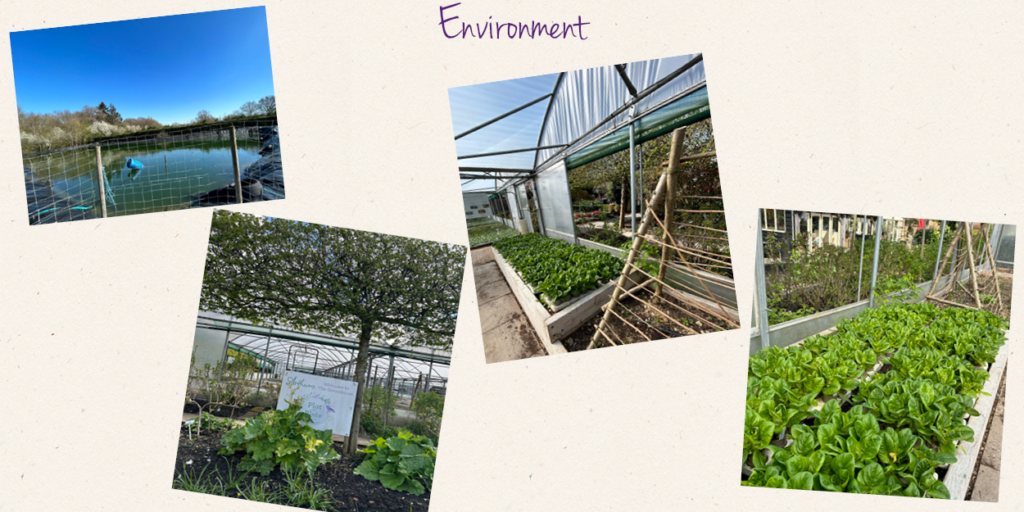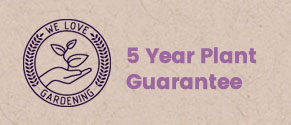Bedding
The bedding team produce 80% of all bedding plants, in which we sell and also send on to our other centres, meaning the production outcome is huge. To give you some insight on the scale, around 70-80 thousand Geraniums are produced each year- how impressive!
This doesn’t happen without a strict and in-depth schedule which closely watches each plant throughout the production process. First up – potting!
There are two large potting machines and a robotic transplanter located within the glasshouses;
The transplanter is for pack plants– The trays are potted, grown and sold in as little as 3 weeks. The machine uses 6 heads to pick up the plug plants and these are then transplanted into packs filled with Coolings professional compost. It grabs the seed, plants it within the pre-potted compost, and then is labelled. The machine pots around 7,500 plants an hour, meaning that 40,000 plug plants have been potted up just this week.
2 potting machines for individual planting– compost is added to each pot, then a drill makes a hole in the compost ready for staff to hand pot the plant, labels are then added to the pots. This method requires speed and precision from the staff who never fail to impress us! Watch it in action.
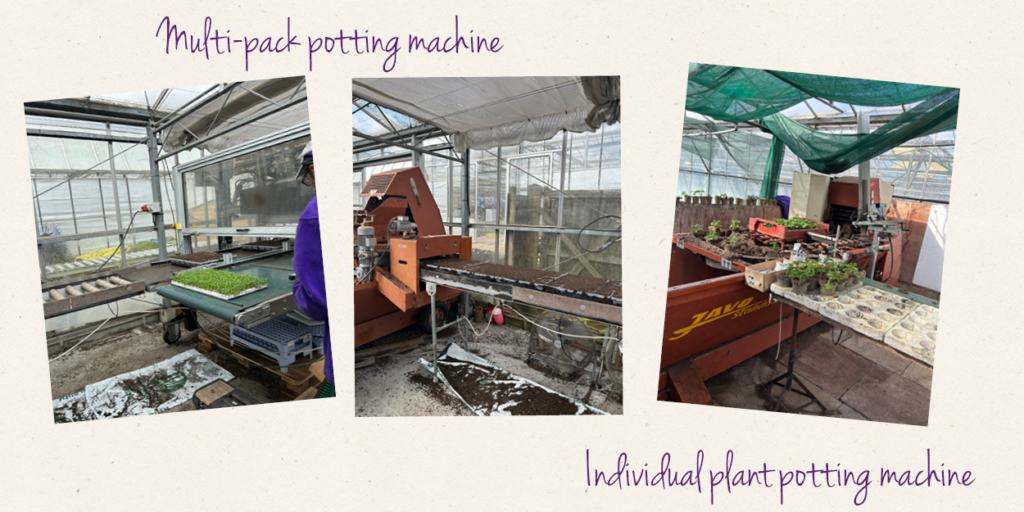
Growing
The plants stay in the glasshouses with heating until they are large enough to be moved out to the colder structures. They are grown on benches where they are off of the ground and warmer. They also may be stored in gutters which are automatically filled with water and drained back to our reservoir. They fit around 4,500 plants so are a great space saver.
Watering
Automatic irrigation comes on in the morning before the staff arrive. There are overhead drippers for baskets. Each nozzle releases 2 litres an hour, but they are only on for 10 minutes, 2-3 times a day.
We also water by hand looking for pests and diseases and to see how the plant is growing, we use biological control to combat pests, we release 200 wasps every 2 weeks that lay eggs into the aphids killing the aphids and they hatch as wasps. You can’t see them as they are so tiny, but they get the job done. This natural pest control ensures that no chemicals are used.
Heating
Heating and humidity are environmentally controlled with our computer to ensure the best possible growing conditions and they get the temperatures they need.
After this for the final stage, they are moved outside to the cooler tunnels and spaced out to allow air around each pot, this gives us more room for production in the warmer glasshouses and ensures plants are hardened off and ready for your garden.
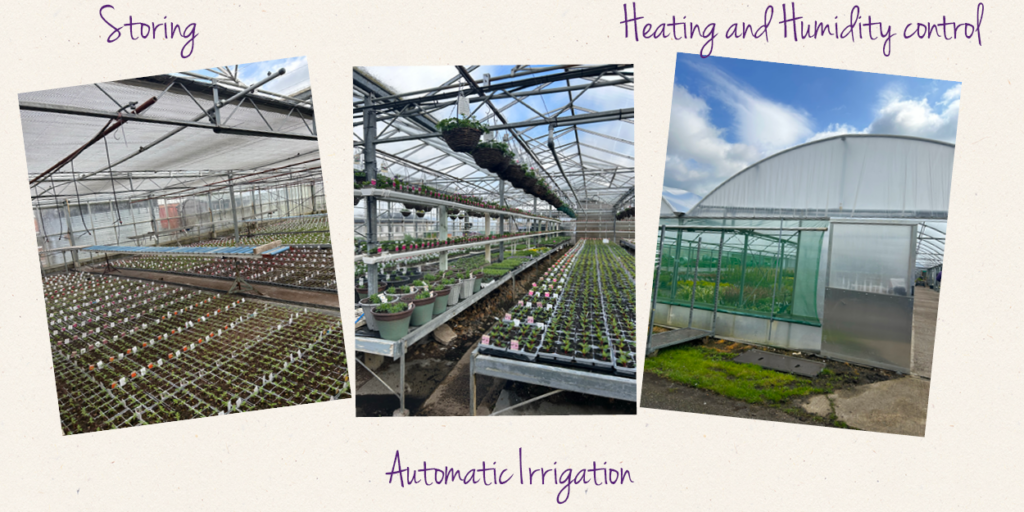

Hardy Production
The Hardy Nursery Team work all year round to produce a large range of Coolings plants including over 300 varieties of shrubs, 600 herbaceous perennials, 300 varieties of roses plus a vast range of trees.
There are approximately 1000 trees across the Nursery. They arrive in July as root balls with no leaves from Holland and New Zealand, we pot them up in the glasshouse, and then the following year they go outside.
Outside, there are frames made out of timber full of sand with drainpipes which run around the edge. It is watered once so there’s a film between the plant and the bed. Plants then take what they need from underneath, this saves overwatering and reduces the risk of disease as wetting foliage increases this. It also results in using little/no chemicals in the growing process.
Unlike bedding, hardy plants use rainwater from the reservoir as they aren’t affected by the possible disease that rainwater can give to young plants with a young root system.
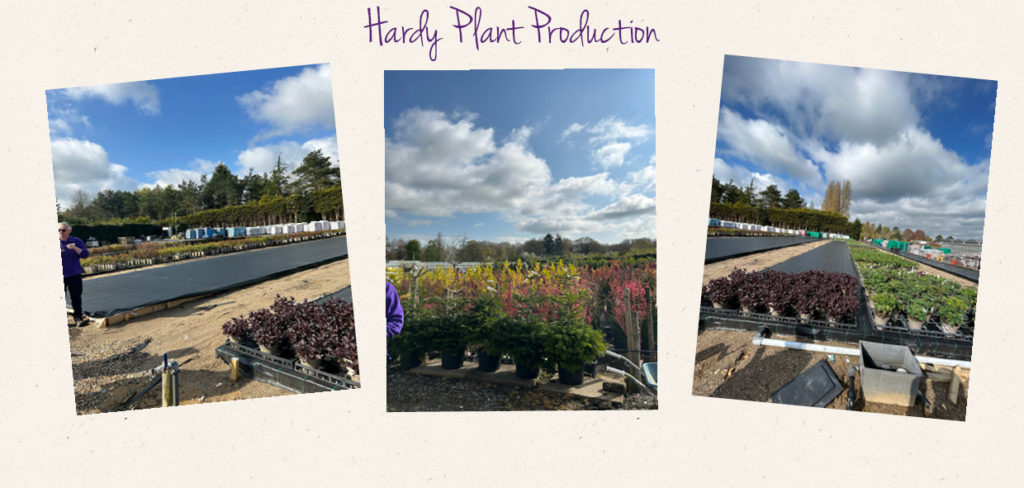

Keeping the Environment at the heart of what we do
Compost
We have been trialling peat-free for years to find the best and ensure we use it within our nursery and it is now available in our shop. From the potted plants you can see that peat free is much lighter in colour and texture- it’s made from wood and coir. This takes more water and feed so Osmocote is added to all of our peat-free crops.
Water harvested using reservoirs
We collect rainwater from the roofs of our buildings and runoff from the ground to feed into our reservoirs at The Gardener’s Garden Centre, this is then used for filtering and for use on our plants.
Targeted irrigation systems are used throughout our nurseries through sand beds and drippers, to reduce our water usage. This also includes automatic control for watering at optimum times, such as dawn and dusk.
Veg beds used for Arthurs
The kitchen garden, located inside the tunnel outside the back of Arthurs, includes seasonal vegetables, salad, fruit and herbs all used in Arthur’s fresh seasonal dishes.
Sourcing from the UK
Most plants come from the UK, ranging from Norfolk, Oxfordshire, Cornwall and Scotland. It’s all about sourcing from locations that give the best quality plants!
